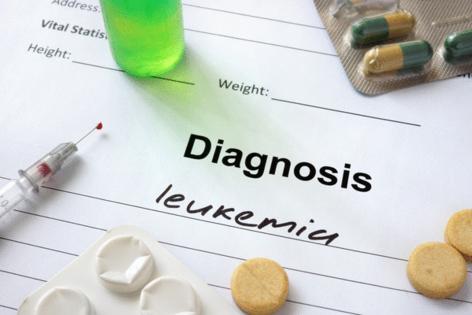Mayo Clinic Q and A: Treatment-free remission for chronic myeloid leukemia
Published in Health & Fitness
DEAR MAYO CLINIC: My 32-year-old daughter was recently diagnosed with chronic myeloid leukemia. It's a lot to take in. We've heard about treatment-free remission. That sounds hopeful. What does that mean? How is it achieved?
ANSWER: It is a lot to take in. Some background information may help you and your daughter understand this diagnosis and potential treatment.
Leukemias are cancers of the blood cells. Chronic myelogenous leukemia (CML) is an uncommon type of cancer of the bone marrow, which produces blood cells. "Myelogenous" refers to the type of blood cells this leukemia affects. "Chronic" means this cancer is more slowly progressing than other severe forms of leukemia.
CML is a genetic problem that causes overproduction of a protein that allows some blood cells to grow out of control. But the gene change that causes CML is not hereditary. Parents do not pass the gene to their children.
According to the American Cancer Society, nearly 9,000 people are diagnosed with CML each year in the U.S. This type of leukemia typically affects older adult males, but both men and women can be diagnosed with CML. It is rarely seen in children.
Some people with CML may experience symptoms such as bone pain, bleeding easily and feeling full after eating a small amount. But many people do not have symptoms until later stages. It is diagnosed with a blood test.
People first diagnosed with CML likely will begin targeted treatment to eliminate blood cells that are overproducing a protein called tyrosine kinase. Medications called tyrosine kinase inhibitors (TKIs) are first-line treatments. Each medication has its own side effects, such as swelling or nausea, that differ for each patient and are discussed in the early stages of choosing treatment. At later stages, other treatments may include chemotherapy or a bone marrow transplant.
Patients we consider for treatment-free remission include those in a low-risk category who take one kind of medication during their treatment course and are in what's called "molecular remission" for at least two years. Molecular remission means the gene that causes CML cannot be found in the patient's blood or bone marrow.
During and after treatment, regular tests are necessary to monitor the patient's blood. When no leukemia is detected, patients may be able to end treatment. Even patients in treatment-free remission must be monitored regularly, for life, and work closely with a hematologist or oncologist. That means testing monthly, progressing to every other month, then every three months, to every six months.
If a patient were to relapse, the disease would be discovered early, and treatment using the same kind of medication would be resumed. Studies over the last 10 to 15 years have shown when restarting medication early, the chance of achieving remission is almost 100%.
There are certain criteria before stopping TKI treatments. This is important as it affects women and family planning. Managing CML, pregnancy and childbirth is challenging but possible with the help of the healthcare team.
At Mayo, we started this treatment-free remission approach in 2015. Many patients have been off treatment for years. For more information, visit the CML Patient Education website.— Kebede Begna, M.D., Hematology, Mayo Clinic, Rochester, Minnesota
©2024 Tribune Content Agency, LLC.










Comments